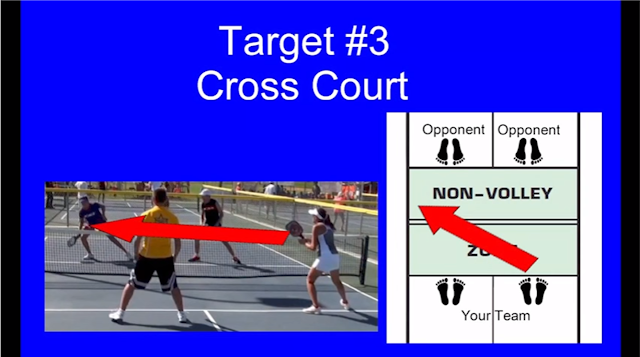Beginning dinkers playing comparable opponents will have success using a dink that stays low and challenges players to hit a string of shots up and over the net. But as players advance, their goal should be to increase the stress on their opponents. One aspect of this is pushing the ball toward specific targets as described in Dink like the Pros. Another aspect is when to aim at these targets. That strategy, as well as how to defend against it, are the topics of this post.
The 3 target areas are shown in the above photo. It should be emphasized that none of the targets are in the opponents comfort zones. All shots should require opponents to reach or move away from their original position.
A shot to the near sideline requires the opponent to move and recover quickly in order to close the gap with his partner.
This target puts the opponent into an awkward position from which it is difficult to make an offensive return.
But the most frequent target used by advanced players is the crosscourt shot. A good crosscourt shot can create a hole by forcing the opponent off the court. The crosscourt shot shot is also a good strategy when you are the player forced off the court.
There are 2 reasons for this strategy. First, a return to the opponent directly across the net is shorter and allows less time for you to get repositioned. Second, the crosscourt short has more room for error. We'll take a break from Joe's video to illustrate this with a video from Mark Renneson called Pickleball Dinking Strategy.
A difficult shot to master is the extreme sharp crosscourt dink to the sideline. It is, however, the most effective shot to force an opponent error.
Stay tuned for continued discussion of the strategy.







No comments:
Post a Comment